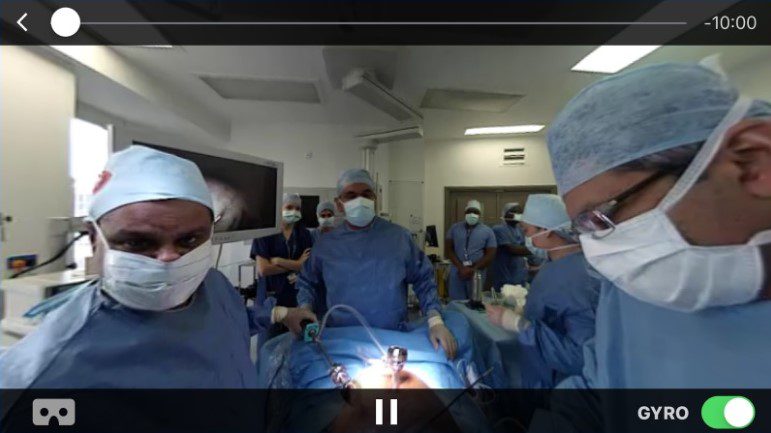Mativision’s VRinOR
As we’ve shown time and time again here on VR Fitness Insider, virtual reality is a medium that is more than just a vehicle for entertainment. Mativision is a company who is continuing to prove that, with the launch of VRinOR.
The platform’s name means “virtual reality in the operating room.” It allows medical professionals to view surgeries from the point of view of the surgeon. By extension, this also means anyone with a compatible smartphone. Mativision claims their technology has been keeping them “in the forefront of the VR revolution.” Does VRinOR back that up?
How Does it Work?
George Kapellos, Mativision’s Head of Marketing and Partnerships, says the platform is “gives better-than-live access” to the operating room. If you imagine medical students watching a surgery, you probably picture that old television standby. Students watching down into the operation theater, while a doctor lectures up to them. These days, prospective surgeons are watching live surgeries through a partition. VRinOR takes this a step further.
Users not only witness the surgery from the surgeon’s perspective, they can also move around the operating room. They can watch from the cameras that are used internally in the patient. They can overlay the patient’s information and other data on their screen. True to the company’s mission for the platform, it doesn’t “replace real life.” Rather, it merely modifies it. In this case, VRinOr places the student directly into the action as opposed to being a mere observer.
Other Applications
https://www.youtube.com/watch?v=Rnp1fK1Ww2w
The launch of VRinOR was accompanied by a live dental implant surgery performed by Dr. Ashok Sethi. He performed these procedures while wearing Samsung Gear VR head-mounted displays. As you can see from the video above, medical students halfway around the world were able to watch the demonstration. While of course, any video can be watched internationally, VR has that inherent extra layer of immersion that video cannot deliver.
There are several implications to the fact that the technology has become so available. VRinOR is an equalizer in the field. Everyone who so desires to view the demonstrations would have access to the same ones no matter where they are. This could be an opportunity for would-be doctors in poorer parts of the world. On top of this, it would mean that a surgeon’s education could become even more comprehensive than it already is.
While we at VRFI don’t claim to be experts on medical programs, VRinOR could allow a doctor to watch procedures that they haven’t been able to experience themselves. Medical conferences could even be held virtually in the future. The possibilities here, as with every other element of VR, are endless and we’re looking forward to how this will positively impact on the health and wellness of millions in the years to come!







Comments are closed.